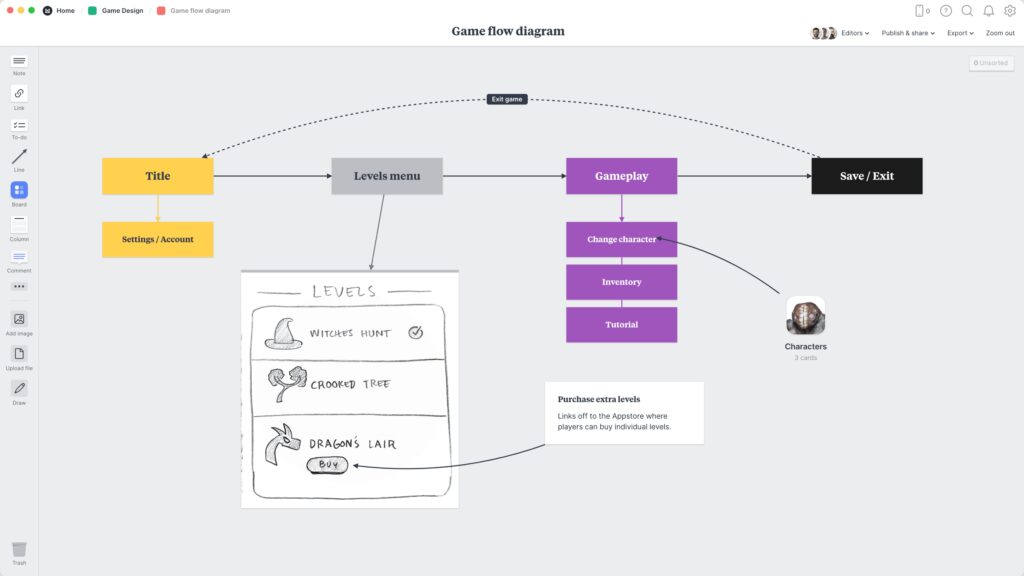Gameplay mechanics shape how players engage with a game, from interacting with the game world to facing challenges and receiving rewards. It is a critical element of game design that requires a systematic process that identifies the game’s core experience, systems and interactions, and creates rules and limitations before testing and iterating. Key elements of gameplay mechanics commonly found in games include objectives, challenges, rewards, and feedback. Understanding the importance of gameplay mechanics and the process for creating them is essential for creating stimulating and captivating games that keep players engaged.
The Building Blocks of Game Design: Understanding Gameplay Mechanics
Game design is the art and science of designing games. It’s a multifaceted process that involves creating the visuals, audio, gameplay mechanics, and storylines that make up a game. Of all these elements, gameplay mechanics are the most critical. They dictate how players interact with the game, what challenges they face, and how they progress through the game. In this article, we explore the building blocks of game design: understanding gameplay mechanics.
What are gameplay mechanics?
Gameplay mechanics refers to the rules, systems, and interactions that shape a player’s experience with a game. These mechanics dictate how players can interact with the game world and with other players. They also determine what challenges players face, how they can overcome those challenges, and what rewards they will receive for doing so.
Why are gameplay mechanics important?
Gameplay mechanics are important because they are the building blocks of a game. They dictate how players engage with the game, and what they get out of it. A well-designed gameplay mechanic can make a game addictive and engaging, while a poorly designed mechanic can frustrate players and lead to negative reviews.
How are gameplay mechanics created?
Creating gameplay mechanics requires a systematic process that takes into account the game’s setting, genre, and target audience. Some common steps in the process include:
1. Determine the game’s core experience
The first step in creating gameplay mechanics is to determine the game’s core experience. This refers to the central activity or activities that players will engage in while playing the game. For example, a racing game’s core experience is racing, while a strategy game’s core experience is building and managing a civilization.
2. Identify the game’s systems and interactions
Once the core experience has been identified, the next step is to identify the game’s systems and interactions. These are the underlying mechanics that make the core experience possible. For example, in a racing game, the systems and interactions might include controlling the car, navigating the track, and managing fuel and tire wear.
3. Create rules and limitations
Rules and limitations are essential to any gameplay mechanic. Rules define what can and cannot be done within the game, while limitations place restrictions on player actions. For example, in a turn-based strategy game, each player may only take one action per turn.
4. Test and iterate
Once the gameplay mechanics have been created, they must be tested and refined. This involves gathering feedback from playtesters and making changes to the mechanics based on that feedback. This iterative process continues until the gameplay mechanics are balanced, enjoyable, and challenging.
Key elements of gameplay mechanics
While gameplay mechanics can vary widely depending on the game’s genre and setting, there are some key elements that are common to most games:
Objectives
Objectives are the goals that players strive to achieve in the game. They provide direction and purpose to the player’s actions, and give them a sense of progression and achievement. Objectives can be short-term or long-term, and can range from defeating a boss to collecting items.
Challenges
Challenges are the obstacles that players must overcome in order to achieve their objectives. They can take many forms, including puzzles, enemies, and environmental hazards. Challenges provide a sense of tension and excitement, and keep players engaged with the game.
Rewards
Rewards are the incentives that players receive for overcoming challenges and achieving objectives. They can take many forms, including experience points, items, and achievements. Rewards provide a sense of satisfaction and progression, and motivate players to continue playing the game.
Feedback
Feedback is the information that the game provides to the player about their actions and progress. It can take many forms, including visual and auditory cues, score updates, and text prompts. Feedback is essential to keeping players informed and engaged with the game.
Conclusion
Gameplay mechanics are the building blocks of game design. They dictate how players engage with the game, and what they get out of it. Understanding the elements of gameplay mechanics and the process for creating them is essential to creating compelling and engaging games. By carefully crafting gameplay mechanics that balance challenge, reward, and feedback, game designers can create experiences that keep players engaged and coming back for more.
